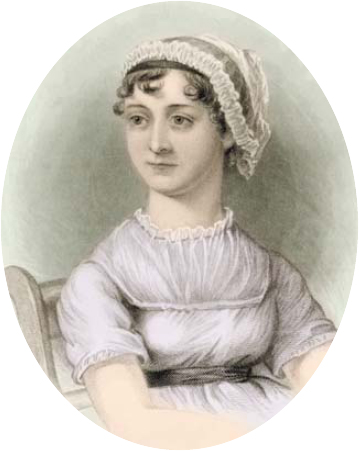
My Father will be so good as to fetch home his prodigal Daughter from Town, I hope, unless he wishes me to walk the Hospitals, Enter at the Temple, or mount Guard at St James.
Letter to Cassandra Austen, 18 September 1796.
Jane Austen was born in 1775 and died in 1817. For almost her entire adult life London was the capital of a country at war with France (1792–1815), with only brief intervals of peace. And yet London flourished, the greatest trading city in the world, with a population growing at a startling rate. New districts pushed the boundaries of London ever outwards with their fine streets, fashionable squares and spacious churches. The Port of London brought in goods from all over the world to fill the shops with a variety of wares never before seen on such a scale. Wealth, fuelled by rapid industrial development and agricultural improvements, poured into the capital. Much of this London remains, to be discovered by the explorer of today, and it can seem very familiar – great public buildings, elegant streets, green parks. And yet the London Jane Austen knew, and incorporated so confidently into her novels, was very different from the London we know now.
Jane Austen, after a portrait by her sister Cassandra, c. 1810.
Kensington, Knightsbridge, Hampstead and Islington were all separate villages. Green fields and market gardens still resisted the fingers of development that pushed between them.
Vast, lawless slums or ‘rookeries’ existed cheek by jowl with fashionable districts. The only policing, apart from the handful of Bow Street Runners, was by parish constables and private watchmen. Prisons of almost medieval squalor were scattered throughout the city. The civic improvements of the later nineteenth century were yet to come – London Bridge was still the crumbling medieval structure of the nursery rhyme, shorn of its shops and houses, Nash’s great Regent Street scheme had yet to begin, and the Thames ran unconfined by the Embankment.
Gas lighting was a novelty in a few streets, privies were still cleared by night-soil men, vast herds of animals were driven daily through the streets to reach the markets, and thousands of horses filled the city with the noise of their hooves and mired the streets with piles of dung. The air was thick with coal smoke from a million chimneys.
Jane never lived for more than a few weeks at a time in London, but she passed through it often on her way to visit friends and family and she stayed on many occasions with her banker brother Henry. Her publishers were in London and her vivid letters are full of detail about shopping expeditions and visits to galleries and theatres.
Despite her protests – ‘…the truth is, that in London it is always a sickly season. Nobody is healthy in London, nobody can be.’ (Emma) – her excitement in coming to Town shines through. ‘Here I am once more in this Scene of Dissipation & vice, and I begin already to find my Morals corrupted,’ she jokes to Cassandra in August 1796.
The eight walks in this book explore three Londons: London at the turn of the eighteenth and nineteenth centuries, the London of Jane Austen’s personal experience, and the London of her novels. They are organised east to west and will take you from grand aristocratic mansions to squalid prisons, and from the theatres where Jane admired the great actors of her day to the place where she found ‘a great many pretty Caps.’ Following these routes we tread in the footsteps of sulky Lydia Bennett, heartbroken Marianne Dashwood, and lovers Harriet Smith and Robert Martin.
The length is given at the beginning of each walk, but not the time taken, as this will vary depending on whether or not you visit any of the museums, theatres and churches along the way. However, those aside, all the walks can be accomplished in about two hours at a leisurely pace.
An author at work? Morning Dress for August 1813 in Ackermann’s Repository.
The family members mentioned in this book are:
Cassandra Austen, née Leigh, Jane’s mother.
Cassandra Austen, Jane’s elder sister to whom the letters quoted here were written.
Charles Austen, Jane’s sixth brother.
Edward Austen Knight, Jane’s third brother.
Eliza Hancock, Jane’s cousin Elizabeth. Married (1) Jean Capot de Feuillide, (2) Henry Austen.
Fanny Austen Knight, daughter of Edward.
Frank (Francis) Austen, Jane’s fifth brother.
George Austen, Jane’s father.
Henry Austen, Jane’s fourth brother.
Philadelphia Hancock, George Austen’s sister, mother of Eliza.
Jane Austen: the author’s letters are quoted with her spelling and punctuation, although her numerous dashes have been omitted.
Gronow, R. H.: The Reminiscences and Recollections of Captain Gronow. 1888 edition.
Nightingale, Joseph: London and Middlesex. Vol. III, part II. Middlesex. 1815.
The Picture of London for 1807 Being a Correct Guide. 8th edition.
Wakefield, Priscilla: Perambulations in London. 1814.
Setting out in a smart Walking Dress from the fashion plates for November 1811 in Ackermann’s Repository.
Jane Austen’s House Museum, Chawton, Alton, Hampshire GU34 1SD. Telephone: 01420 83262. Website: www.jane-austens-house-museum.org.uk
The Jane Austen Centre and Regency Tearoom, 40 Gay Street, Queen Square, Bath BA1 2NT. Telephone: 01225 443018. Website: www.janeausten.co.uk